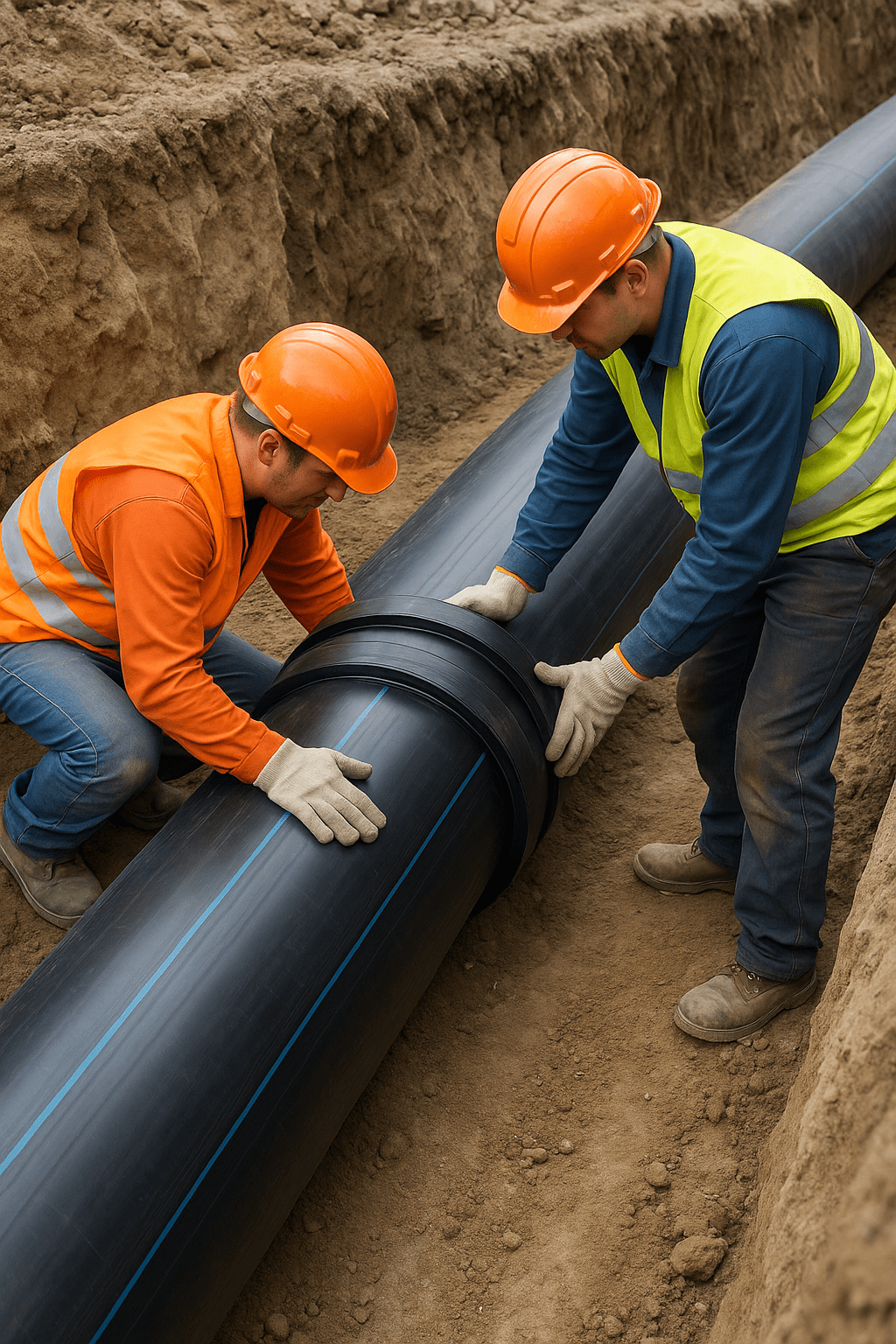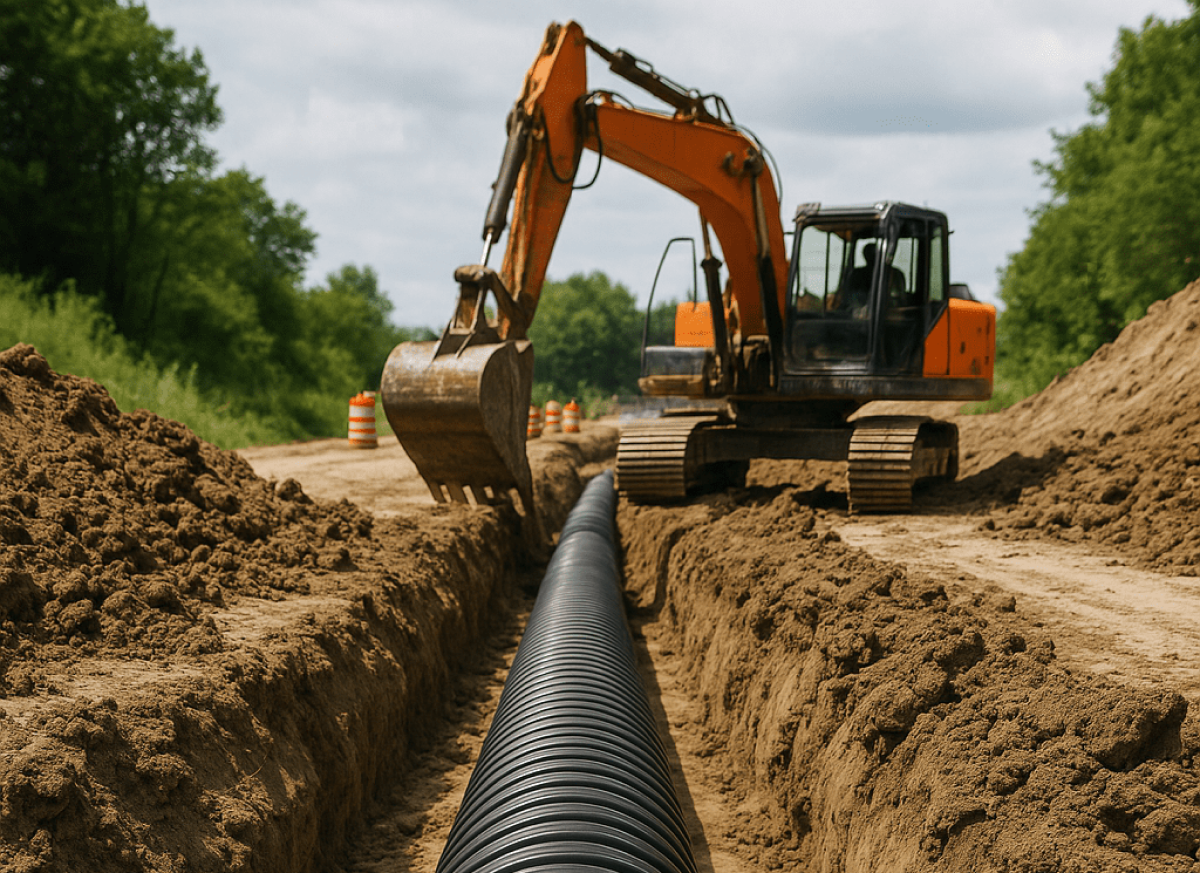
For modern infrastructure-especially in Scandinavia’s dynamic climates-HDPE pipe benefits like durability, flexibility, and eco-friendliness have made it a preferred alternative over traditional materials. In this article, we explore what makes HDPE pipes uniquely suited for civil engineering and urban infrastructure.
Exceptional Corrosion Resistance of HDPE Pipes
Bare metal pipes deteriorate in acidic soils or saline conditions, leading to leaks and system failures. By contrast, HDPE pipes do not rust or corrode, offering superior longevity and reduced maintenance in Scandinavian regions with corrosive soils.
High Impact Strength & Abrasion Resistance
Thanks to its high impact strength, HDPE pipe benefits shine in areas prone to seismic activity or heavy machinery use. Unlike concrete or cast iron, HDPE resists dents, cracks, and abrasive wear, ideal for rugged civil applications.
Flexibility & Simplified Installation
HDPE’s flexibility allows easy routing around obstacles and reduces ground disruption. Heat-fused joints form leak-free seals without heavy machinery—critical for fast, efficient installations in urban projects.
Long-Term Cost Effectiveness
Though initial costs may be higher, the lifecycle cost savings of HDPE-due to reduced repair, maintenance, and extended service life-are considerable. In Scandinavia, this translates to reliable infrastructure with predictable, lower total costs.
Eco-Friendly & Recyclable
HDPE is recyclable and generally has a lower environmental footprint than metal or concrete. Reusing HDPE pipes in new systems supports circular economy goals and aligns with Scandinavian sustainability policies.
Lightweight Handling Cuts Costs
HDPE pipes are significantly lighter than traditional materials, allowing manual handling on-site. This cuts equipment, labor time, and emissions—benefiting both project budget and sustainability goals.
Key Applications in Infrastructure
- Water Supply: HDPE pipes carry clean water efficiently-check our detailed installation guide.
- Sewer & Stormwater Systems: Resistant to corrosive wastewater-ideal for Nordic climates and urban drainage.
- Gas Distribution: Leak-resistant and impact-tolerant HDPE pipes ensure safer pipelines underground.
- Erosion Control & Culverts: Durable under changing water levels and freezing temperatures.
Case Study: New Zealand Floods (2023)
After severe floods, many affected regions chose HDPE pipelines for rapid, trenchless installation and long-term resilience—showcasing how HDPE pipe benefits enhance recovery and durability.
Maximizing HDPE Pipe Performance
- Use heat fusion for strong, leak-free joints.
- Select pipe grade/SDR tailored for temperature and load.
- Schedule routine inspections and flushing after frost seasons.
- Purchase certified HDPE pipes from trusted suppliers.

Conclusion
When planning civil and infrastructure projects in the Scandinavian region, understanding and leveraging HDPE pipe benefits can drive better performance, lower lifecycle costs, and support sustainable development. Choose quality materials, follow proper installation standards—then reap the rewards in durability and eco-responsibility.
Read more about future HDPE innovations and pipe longevity best practices.
Explore HDPE fusion equipment from Orbitalum and review ASTM standards from ASTM International.


